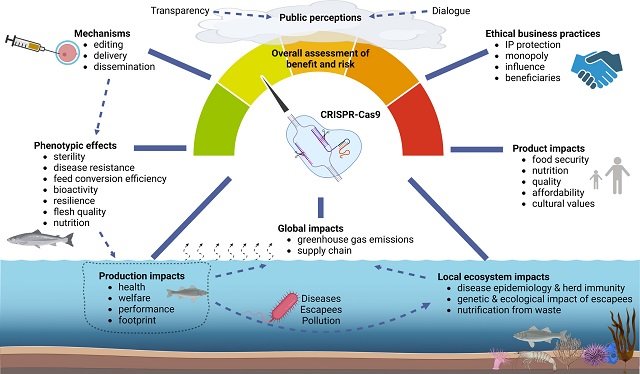
The Center of Aquaculture Technologies (CAT), a global leader in sustainable genetic innovation for aquaculture, has announced the signing of an exclusive licensing agreement with the University of Maryland, Baltimore County (UMBC). This agreement covers two patents related to the induction of sterility in finfish using Morpholinos. This strategic collaboration strengthens CAT’s intellectual property portfolio and further backs their strategy in bringing responsible genome editing solutions to aquaculture.
Why sterility matters in aquaculture
Producing animals that do not undergo sexual maturation aligns closely with the core goals of the aquaculture industry. Sterility in farmed fish offers significant benefits across performance, environmental protection, and animal welfare:
- Improved performance: Sterile fish avoid early sexual maturation, enhancing growth rates and feed conversion efficiency, reducing production costs, and minimizing waste.
- Environmental protection: Sterility safeguards the distinctive traits of wild populations, protecting biodiversity and supporting balanced ecosystems. This also addresses regulatory concerns regarding fish escapes from aquaculture production systems.
- Animal welfare: By reducing stress and aggression associated with sexual maturation, sterile fish experience improved health and lower mortality rates.
“CAT is committed to advancing Next-Gen Breeding solutions that combine scientific innovation with environmental and economic responsibility,” said Dr. John Buchanan, CEO of CAT. “Our partnership with UMBC allows us to bring further pioneering sterility technology closer to commercial reality, supporting healthier fish, stronger ecosystems, and more efficient production systems. With a growing global population to feed, sustainable aquaculture solutions have never been more critical, and genome editing, underpinned by sterility, is a key part of that future.”
Advancing morpholino technology
Morpholino sterility induction works by silencing genes critical for germ cell development in fish embryos through bath immersion. The fish grow normally but remain sterile, effectively avoiding the negative effects of early sexual maturation on growth, flesh quality, and survival. Unlike other methods, such as triploidy, this approach preserves high-performance genetics while addressing animal welfare concerns.
Dr. Yonathan Zohar, Professor at UMBC and Chair of the Department of Marine Biotechnology at IMET, commented on the agreement: “We are pleased to be working with CAT to advance the development of sterility technology in aquaculture. This collaboration, including a sponsored research agreement, aims to improve sterility success rates in Atlantic salmon, with potential applications across all finfish species. Our partnership with CAT will enable us to achieve 100% sterility and bring this technology to the aquaculture industry.”
Ten-Tsao Wong, Associate Professor, highlighted the medical precedents of the technology: “Morpholinos have been approved by the FDA for human medicine and are being used to treat Duchenne muscular dystrophy (DMD). This new agreement with CAT can accelerate our efforts to expand this technology to produce sterile fish. We look forward to collaborating with CAT to bring this technology to market.”
A strategic tool for the industry
Dr. Buchanan concludes that the Morpholino technology complements CAT’s existing genome editing solutions by offering a quick and flexible alternative. “It can be used in situations where sterility is urgently needed, and while the introduction of sterility through genome editing into a breeding population is still in progress,” Buchanan explained. “For example, in salmonids, where breeding cycles are longer, this technology provides a timely option.”
Additionally, this technology will be available for situations where genome editing is not currently utilized. “Sterility is a critical issue for the aquaculture industry, and this gives us another reliable tool that we can call on,” added Buchanan.
Stay Always Informed
Join our communities to instantly receive the most important news, reports, and analysis from the aquaculture industry.
Editor at the digital magazine AquaHoy. He holds a degree in Aquaculture Biology from the National University of Santa (UNS) and a Master’s degree in Science and Innovation Management from the Polytechnic University of Valencia, with postgraduate diplomas in Business Innovation and Innovation Management. He possesses extensive experience in the aquaculture and fisheries sector, having led the Fisheries Innovation Unit of the National Program for Innovation in Fisheries and Aquaculture (PNIPA). He has served as a senior consultant in technology watch, an innovation project formulator and advisor, and a lecturer at UNS. He is a member of the Peruvian College of Biologists and was recognized by the World Aquaculture Society (WAS) in 2016 for his contribution to aquaculture.



